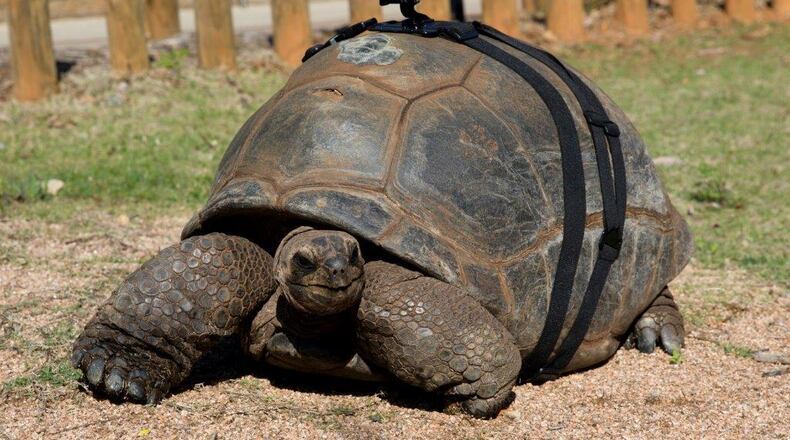Her promenade across the park grounds was a springtime tradition at Zoo Atlanta. Patches, a 200-pound Aldabra giant tortoise, would slowly but determinedly make her way from her glassed-in winter enclosure to her outdoor warm-weather habitat.
One year, the zoo even made her internet famous by strapping a GoPro camera to the top of her shell and posting the video of her walk on YouTube.
On Saturday, though, the zoo announced that Patches has passed on. Animal care and veterinary teams had been treating her during the past week for lethargy, weakness, lack of appetite and fluid build-up, Zoo Atlanta said in a news release. A CT scan revealed a large mass in her body cavity and other health concerns.
With the reptile’s quality of life in doubt, the teams made the “difficult decision” on Saturday to euthanize her, the zoo said.
Jennifer Mickelberg, Zoo Atlanta’s vice president of Collections and Conservation, said in a written statement that Patches “had a personality on par with her size, and she will be dearly missed.
“It is not difficult to make connections with an animal such as a gorilla or a giant panda or a giraffe,” Dr. Mickelberg said. “Some people find it more challenging to connect with reptiles, which makes Patches’ legacy all the more extraordinary.”
Patches had been not only one of the zoo’s largest reptiles, but one of its oldest residents. The zoo didn’t know her exact age, and when the GoPro video was made in 2016, officials said she was about 50 to 60 years old. On Saturday, the zoo estimated she was in her 70s or 80s.
Either way, she died young. Aldabra tortoises, the world’s second-largest tortoise species, can live to be well past 100. They are native to the islands of the Aldabra Atoll in the Seychelles archipelago, located in the Indian Ocean off the coast of eastern Africa. Their species is classified as “vulnerable” by the International Union for Conservation of Nature, meaning they’re threatened with extinction unless conditions change.
Existential threats to Aldabra tortoises include poaching, climate change and new human settlements, which bring domestic animals that prey on tortoises and compete for food.
Patches arrived at Zoo Atlanta in 1994, brought there from another zoological organization. Atlanta still has two other Aldabra tortoises, a male named Shuffles and a female named Corky.
A necropsy on Patches will be performed by University of Georgia Zoo and Exotic Animal Pathology Service, the zoo’s news release said.
About the Author
The Latest
Featured


